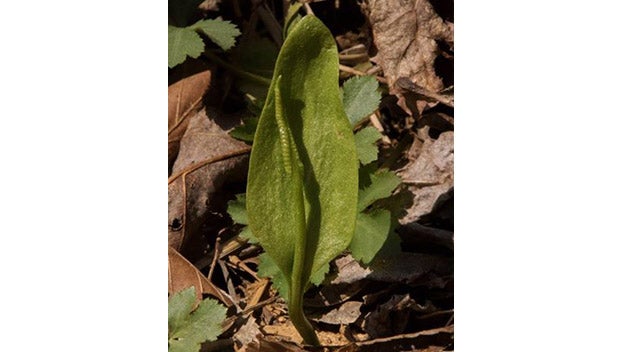The Adder’s Tongue: An unusual looking plant
Published 5:00 pm Thursday, January 6, 2022
|
Getting your Trinity Audio player ready...
|
It doesn’t look like a fern, and it really isn’t one, but it’s fern-like in some respects. Meet the southern adder’s tongue (Ophioglossum pycnostichum), a native member of the Ophioglossum Family. Note that the southern adder’s tongue is no longer O. vulgatum; there is a new name.
The southern adder’s tongue has a spoon-shaped leaf and upright spore-bearing stalk. Each true leaf has two very distinctive sections: a vegetative one (the part that looks like a leaf) and a fertile portion, the upright stalk that has spores on the end. If you look very carefully at the juncture of these two portions, you’ll see a split in the veins of the leaf stalk.
The southern adder’s tongue only spends a short period of time above ground. Most of the time it exists, often for years, underground as a gametophyte or as a fleshy rhizome that has an obligate relationship with a mycorrhizal fungus. When the plant has stored enough energy, it sends up a sterile leaf. When even more energy has been stored, it sends up a fertile one or sporophyll.
Members of the Ophioglossum Family are unusual in that they have large numbers of chromosomes, far more than humans. In fact, a large-spored form found near Mountain Lake has 1320 chromosomes, the largest number of any plant. Why? Members of this family are ancient plants and have engaged in polyploidy – a process whereby the cell nuclei end up with more than the usual two sets of chromosomes. These plants seem to have undergone this process multiple times, perhaps as many as 10 times. Does this mean that they’re nearing the end of their evolutionary cycle? Maybe.
There is considerable lore related to the various species of adder’s tongue. Years ago, people thought that anyone collecting these plants risked being followed by snakes. Witches supposedly used the adder’s tongue fern to stop gossip and slander. In a more practical vein, the leaves were used to make a poultice for treating skin ulcers and scrofula (a form of tuberculosis).
The common name, adder’s tongue refers to the shape of the spore-bearing spike.
Look for this interesting plant in rich, moist forests. If you find one, take time to observe it carefully because it may not appear again for years.
DR. CYNTHIA WOOD is a master gardener who writes two columns for The Herald. Her email address is cynthia.crewe23930@gmail.com.





